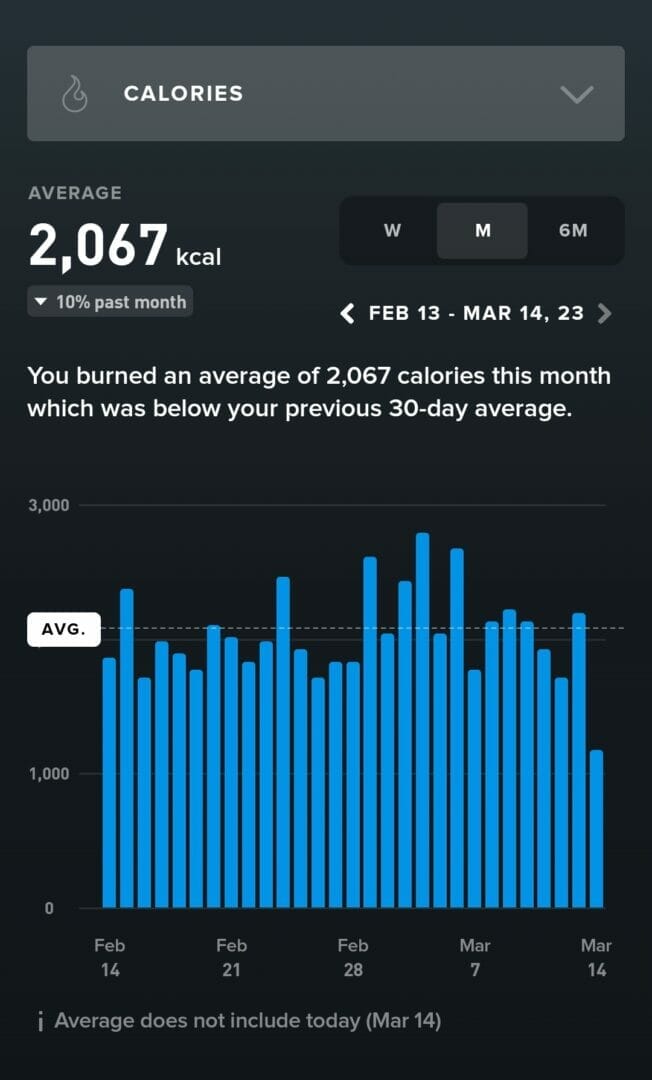By Jason Giles, CSCS, SFG2, SFL, USA Weightlifting Coach L2
Do you have a Fitbit, Whoop, or Apple Watch? Do you use the various fitness trackers to track you calories? It’s not telling you the whole truth, or at least not the truth you think it is. Most of today’s fitness and health apps will report the number of Calories you’ve burned in a day and usually report another value for what you’ve used during an activity or exercise. Other apps tell you, “to lose weight, you can eat up to 2,094 Calories today.” Nothing new here, right? For the last 30 years we’ve been told that all weight loss and fitness is measured by 2 things: your BMI and Calories in vs. Calories out. What’s worse is, most people don’t really even know what a Calorie really is!

I’ve had conversations with students about diets, food, and Fitness Apps, and I find myself repeating something that I believe is really, really important. It’s so important that I feel like I needed to write a whole blog entry about it.
It has to do with Calories. You see, the fitness and diet industries rely very heavily upon this little metric. They depend on you believing that it’s a reliable way to measure the energy you take in versus the energy you spend.
“The Atwater system uses the average values of 4 Kcal/g for protein, 4 Kcal/g for carbohydrate, and 9 Kcal/g for fat. Alcohol is calculated at 7 Kcal/g. (These numbers were originally determined by burning and then averaging.) Thus the label on an energy bar that contains 10 g of protein, 20 g of carbohydrate and 9 g of fat would read 201 kcals or Calories. A complete discussion of this subject and the calories contained in more than 6,000 foods may be found on the National Data Lab web site at http://www.nal.usda.gov/fnic/foodcomp/. At this site you can also download the food database to a handheld computer. Another online tool that allows the user to total the calorie content of several foods is the Nutrition Analysis Tool at http://www.nat.uiuc.edu.”
-Full Article HERE
So here is the thing. We “know” on average that these components are valued at about 4,4,9 kCals (Calories from Protein, Carbs, and Fats), but those are averages. Not only that, but the method by which this value was derived for fats, protein, and carbohydrates is purely mechanical.(Read the article I reference to above and see what I mean.) Mechanical, but that’s not how animals process food. We break food down mechanically when we chew it, but most of our digestion of food is a chemical process. Not only that, but it’s far from instantaneous. So many factors can go into how much energy (Calories) you absorb from any given food, that we’re not even close to knowing exactly what the value of any food is. It’s possible that in 10-50 years you’ll be able to do a genetic test and a metabolic test to determine exactly how efficiently you process foods for energy, but that doesn’t help you today.
I’m not saying that Calorie values on labels are useless, or that these fitness apps are garbage. No, no, no! But I am saying they are far from Gospel. Calories in vs Calories out doesn’t work the way most people think. It’s not a reliable score card or accounting system. Stop fretting over the specific number, and instead use Calories as a general guideline.
Yes, the Law of Thermodynamics still applies. The problem isn’t Energy in vs Energy out. If you expend more energy (work out, play ball, etc.) than you take in (eating or drinking) you will lose weight and vice versa. The problem is in relying on the Calorie as a way of measuring energy in the human system.
So what’s the solution? Well, the fitness and diet industries are still working on that one. So is the Medical industry. I’ll tell you what I think has worked for most people that have seen success, and it’s not one specific diet, trend, or fad. No matter what you do, they all could work as long as you follow them consistently, and they are sustainable for you. Forget all that though! Start vesting in being mindful about how you fuel your body. Start considering the quality and value of the food you eat. If you want to lose weight, then you basically have to eat less and be physically active. How you do it is up to you. Perhaps I’ll write more on this in the future. Feel free to email or message me with comments, feedback, or questions.





